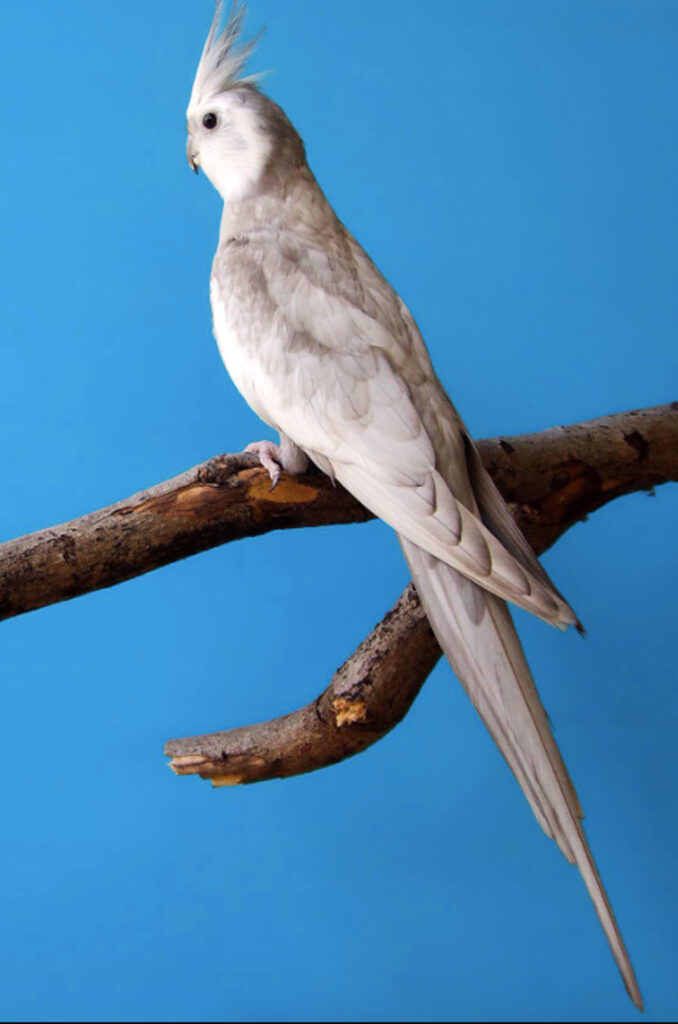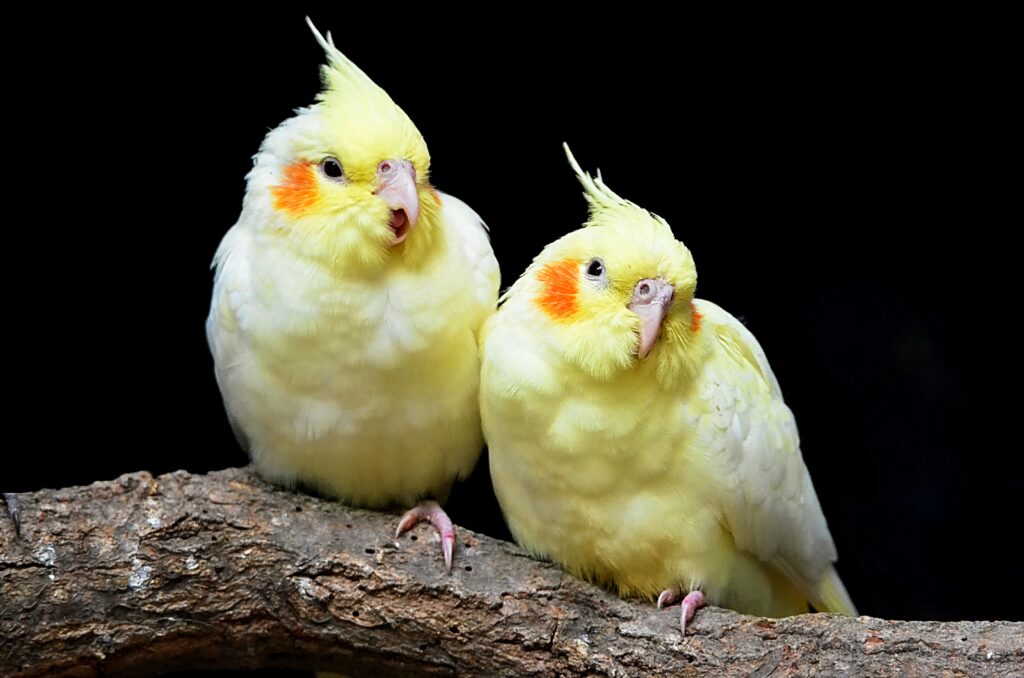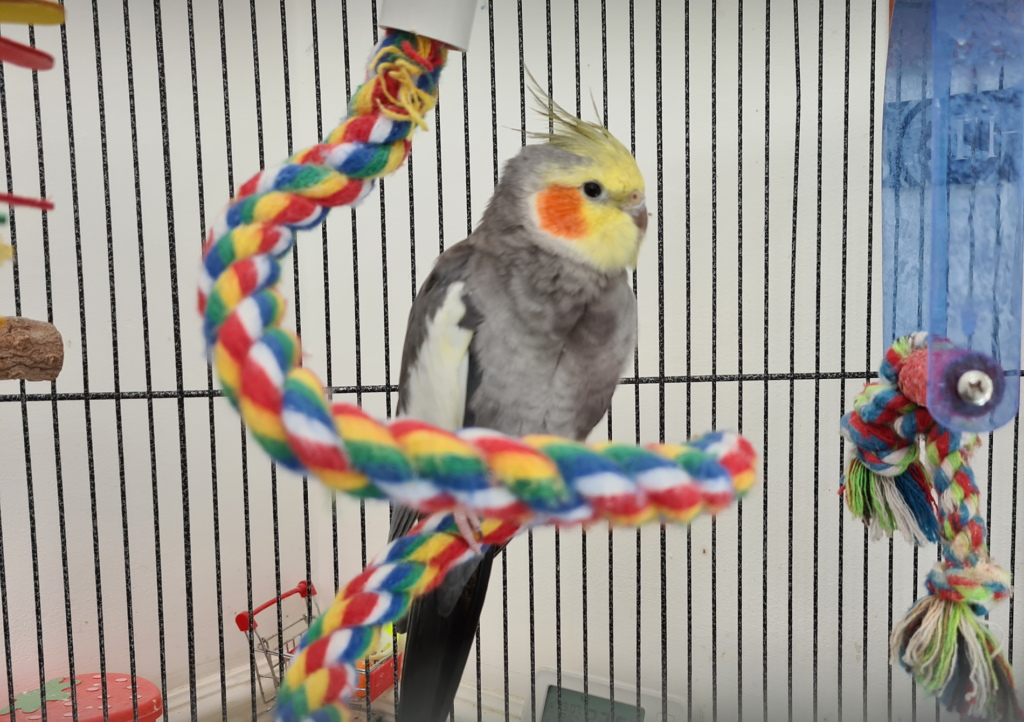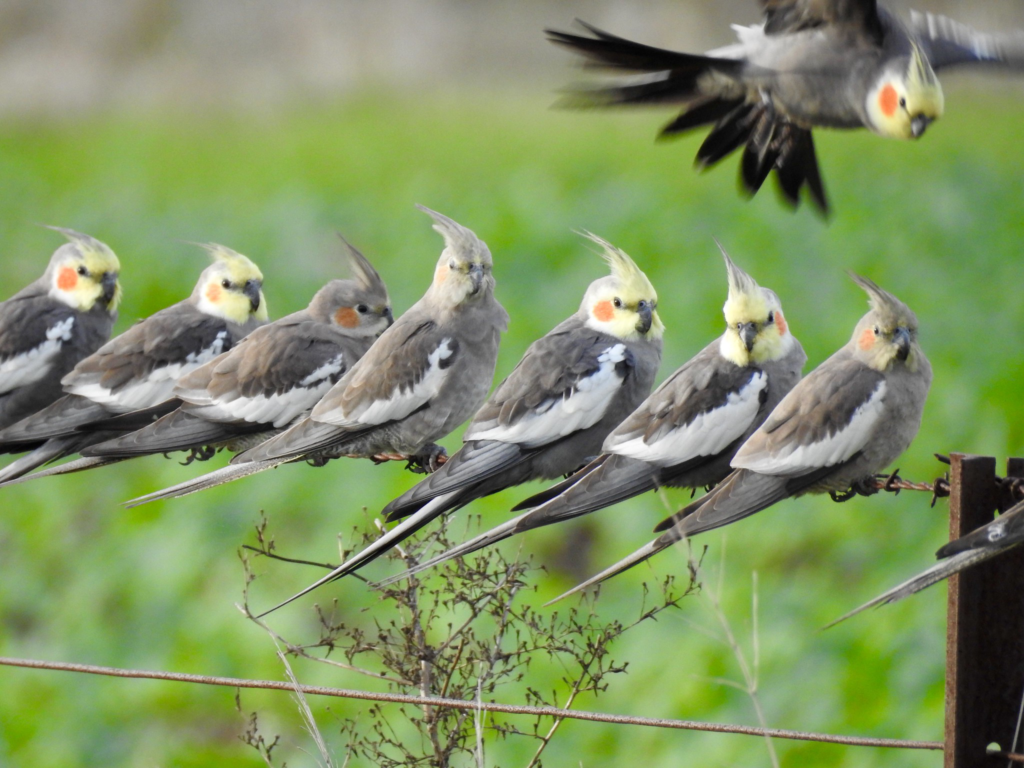The Enchanting Universe of Rare Cockatiels
When it comes to rare cockatiels, there’s more than meets the eye. These aren’t just your average, everyday birds. No, they’re the feathery rockstars of the avian world, with stories, colours, and histories that are nothing short of captivating.
The Intriguing Evolution of Cockatiels
Why is it that we find certain cockatiels rare while others are commonplace? It’s a tale that begins with evolution. Over millennia, cockatiels have undergone natural mutations that occasionally result in breathtaking colour patterns or unique physical traits.
What Makes a Cockatiel ‘Rare’?
Now, you might be thinking, “Aren’t all cockatiels the same?” Far from it! Common cockatiels, with their grey and white plumage, might be the first image that springs to mind. However, rare cockatiels break this mould, boasting plumages in hues of golden-yellow, pristine white, soft silver, and even deep olive.
The Celebrity Birds: Noteworthy Rare Cockatiel Varieties



Lutino Cockatiels
Picture a bird drenched in sunshine. That’s the Lutino cockatiel for you. These rare beauties stand out with their golden-yellow plumage and soulful red eyes.
Albino Cockatiels
Then, there’s the elusive Albino cockatiel. Immaculate white, with striking ruby-red eyes, they are like feathery dreams come alive. Technically, this mutation in cockatiels is not albinism. Instead, it’s a combination of the white-face gene and the lutino gene.
Silver and Pastel-faced Cockatiels
These are nature’s masterpieces. With a silvery sheen or dreamy pastel hues, they are reminiscent of a painter’s finest strokes.
The Science Behind The Rarity
While nature’s magic plays a part, science has its role too. Specific genes dictate the colour patterns in cockatiels. When these genes mutate, they lead to the diverse and stunning variations that classify some cockatiels as ‘rare’. Moreover, breeders have recognised these genetic marvels, and through selective breeding, they’ve amplified the occurrence of these traits, producing birds of unparalleled beauty.
The Journey to Obtain One
If you’re now captivated by the allure of these rare cockatiels and are thinking of getting one, tread carefully. These birds, while majestic, come with their quirks.
For one, they’re not readily available. You might have to embark on a journey, connecting with specialised breeders or attending exclusive bird shows.
Additionally, the price tag attached to these rarities can be significantly higher. Their unique appearances, combined with the challenges in breeding and maintaining them, contribute to their premium cost.
Caring for Your Rare Feathered Friend
Owning a rare cockatiel is a privilege and responsibility. Such birds might need specialised care. For example, Albino cockatiels, with their sensitivity to light, might require dimly lit habitats to avoid undue stress.
Furthermore, as with all pets, regular vet check-ups, a balanced diet, and ample interaction are crucial. After all, these aren’t just showpieces; they’re living beings with needs, emotions, and a desire for companionship.
Find out more about the basics of cockatiels here.
The Ethical Implications: Beyond the Beauty of Rare Cockatiels
While the demand for rare cockatiels has surged, it’s essential to approach the idea of owning one with a sense of ethics. There have been instances of inbreeding or other unethical practices to meet the demand. As potential owners or admirers, it’s crucial to support breeders who uphold ethical standards, ensuring the well-being of these beautiful birds.
In Conclusion: The Majestic World Awaits
Rare cockatiels are nature’s marvels. Each bird, with its unique story, colour, and presence, adds a touch of magic to our world. Whether you choose to be an owner, an admirer, or simply a curious reader, the world of rare cockatiels offers insights, beauty, and tales that are undeniably enriching.
FAQs for “The World of Rare Cockatiels: Discovering Unique Feathery Friends”
What makes a cockatiel ‘rare’?
A cockatiel is considered ‘rare’ based on its unique colour, pattern, or a combination of genetic mutations that differentiate it from the commonly found grey cockatiels.
What is a Lutino cockatiel?
A Lutino cockatiel has a golden-yellow face and crests, accompanied by red eyes. It stands out due to its lack of the grey pigment which bestows its golden hue.
How is an Albino cockatiel different?
Albino cockatiels are pristine white in colour, sporting striking red eyes. They lack both yellow and grey pigments, making them distinct from other cockatiels.
Where can one find the ‘Silver’ cockatiel?
The ‘Silver’ cockatiel, known for its light grey or silvery appearance, is bred by specialised breeders, and places like Australia have been known to house them.
Why do some cockatiels have unique colours?
The distinct colours of rare cockatiels arise from specific gene mutations. These mutations can lead to varied patterns and colours that differ from the standard grey.
Are rare cockatiels expensive?
Yes, due to their unique appearance and the challenges in breeding, rare cockatiels often come with a higher price tag compared to their common counterparts.
What care do Albino cockatiels require?
Albino cockatiels are sensitive to light due to their lack of pigmentation. Hence, they might require specific accommodations, like shaded or dimly lit environments, to ensure their comfort.
Why is ethical breeding crucial for cockatiels?
Unethical breeding practices, like inbreeding for unique colours, can lead to health issues in the birds. Ethical breeding ensures the well-being of the cockatiels over mere appearance.




